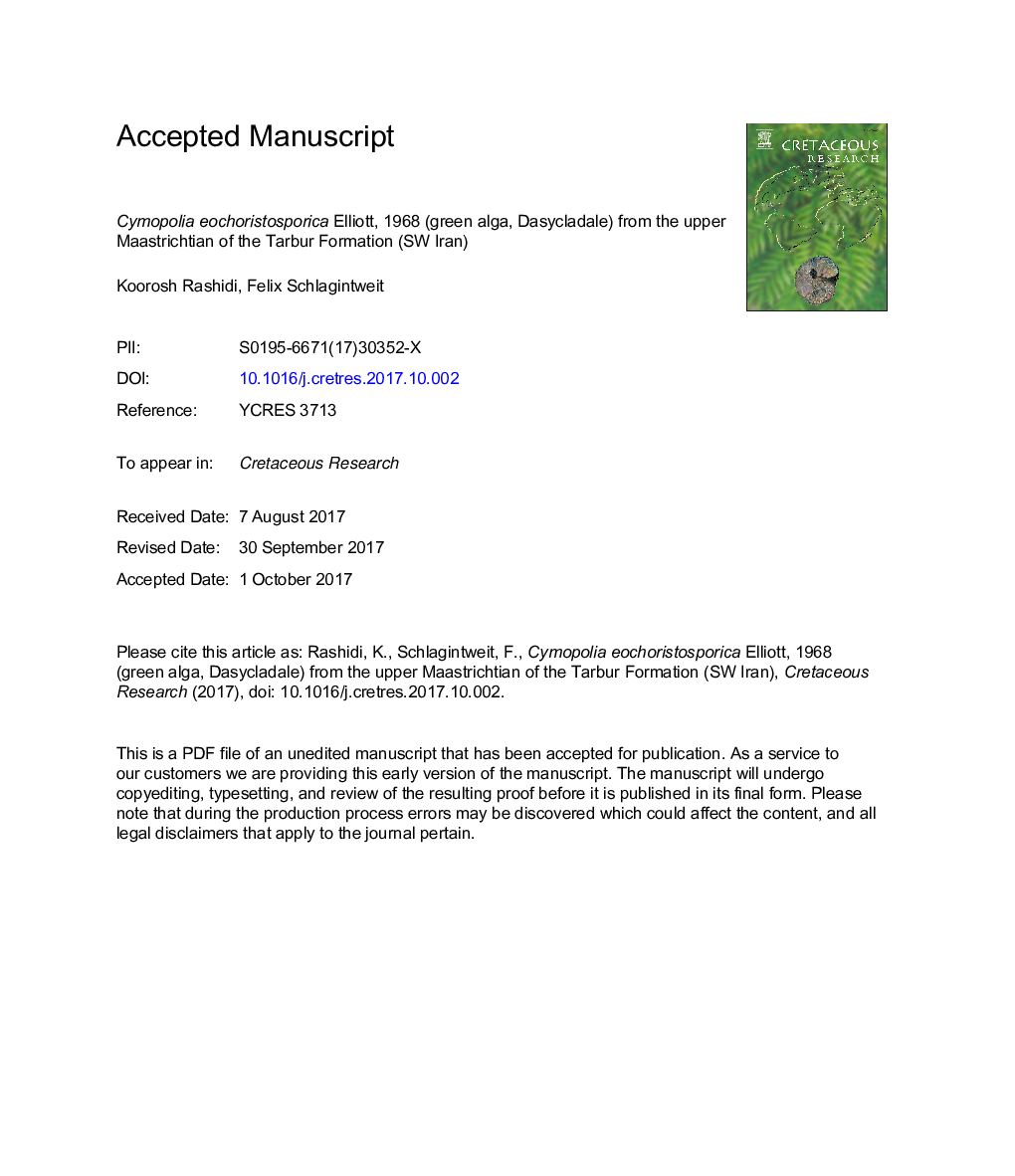| Article ID | Journal | Published Year | Pages | File Type |
|---|---|---|---|---|
| 8916429 | Cretaceous Research | 2018 | 12 Pages |
Abstract
The poorly known dasycladalean alga Cymopolia eochoristosporica Elliott, 1968 is reported for the first time from the upper part of the Tarbur Formation (Zagros Zone, SW Iran) assigned to a late Maastrichtian age. It was reported so far from the Maastrichtian Aruma Formation of Saudi Arabia (type-locality), the Maastrichtian Simsima Formation of Oman, and the Maastrichtian (e.g., Zongshan Formation) of Tibet. All these Maastrichtian occurrences belong to the southern Tethyan margin, with special concentration within the Arabian plate, evidencing its palaeobiogeographic as well as biostratigraphic importance. C. eochoristosporica occurs in algal-foraminiferan wackestones together with other dasycladaleans (e.g., Salpingoporella pasmanica RadoiÄiÄ) and halimedaceans, benthic foraminifera (Broeckina, Tarburina, Laffiteina, Gyroconulina, Loftusia, Omphalocyclus), rudists, gastropods, as well as corals. As a peculiarity, the calcification of the alga is made up of light-brownish calcite, presumably replacement of the original aragonitic composition. The dasyclad-bearing deposits are assigned to an internal infralittoral, possibly polyhaline depositional setting.
Related Topics
Physical Sciences and Engineering
Earth and Planetary Sciences
Palaeontology
Authors
Koorosh Rashidi, Felix Schlagintweit,
